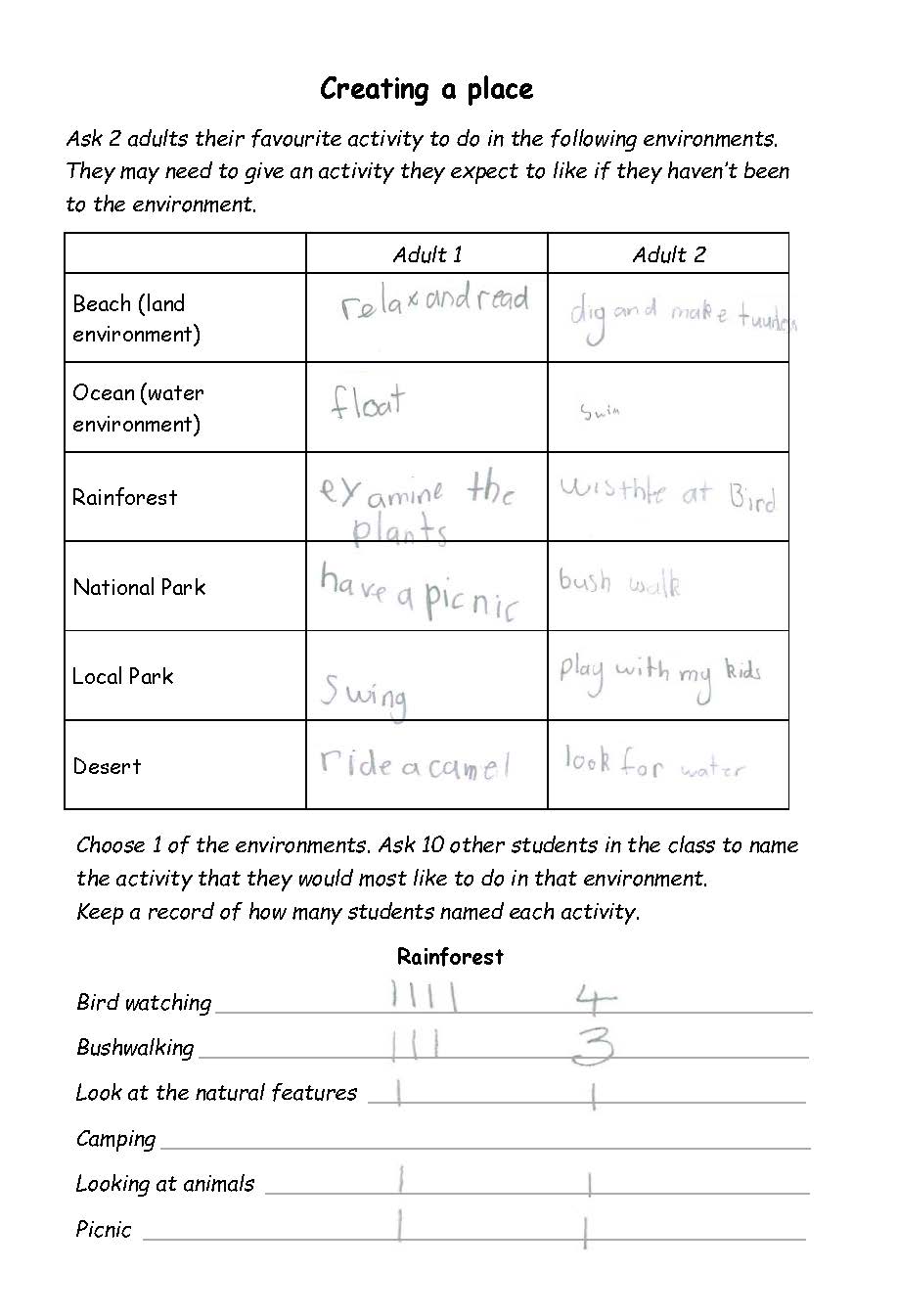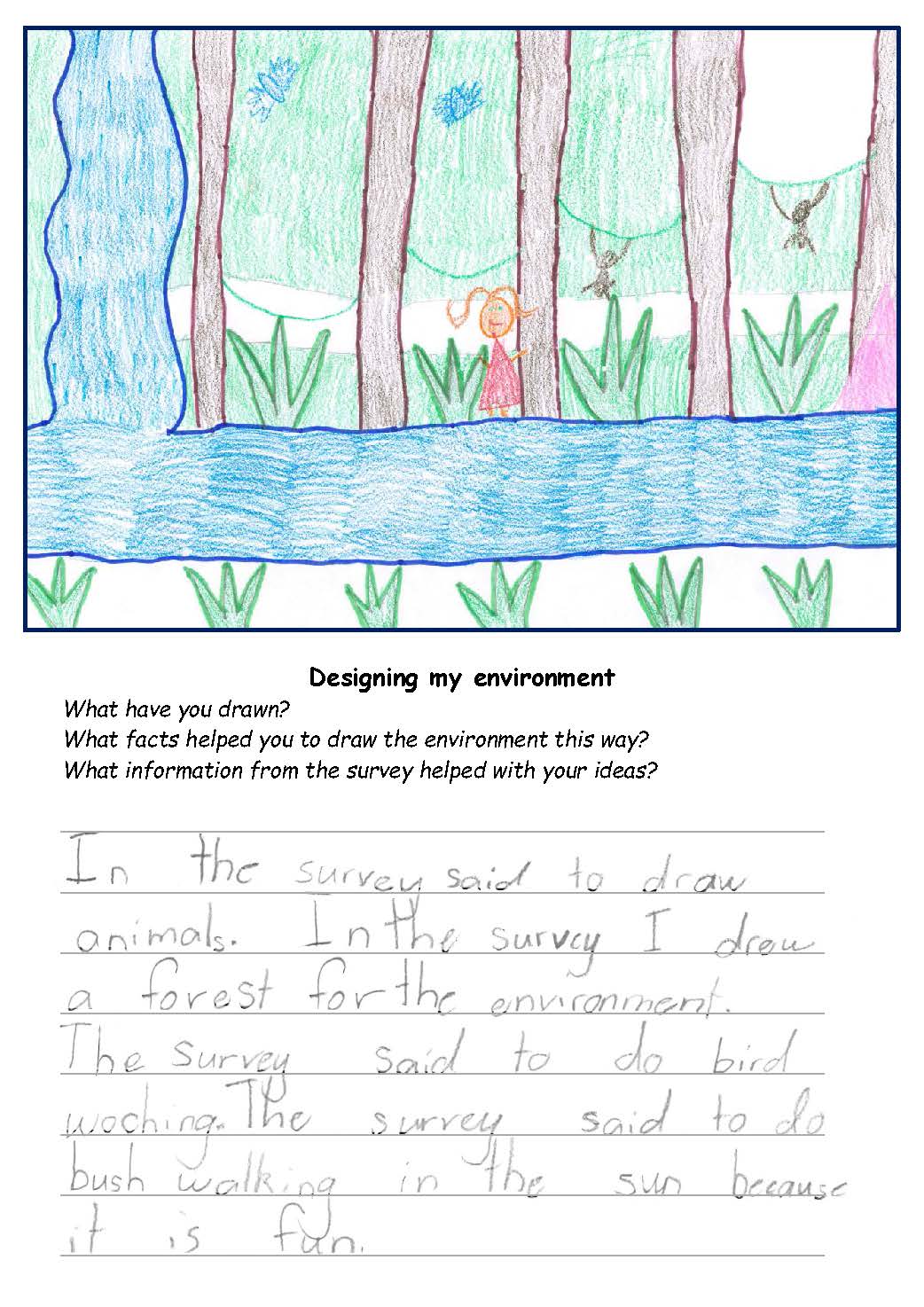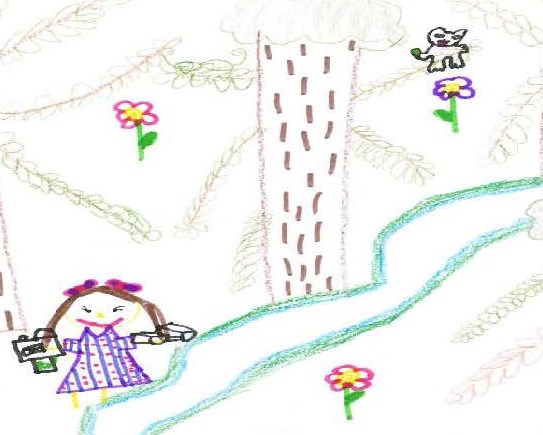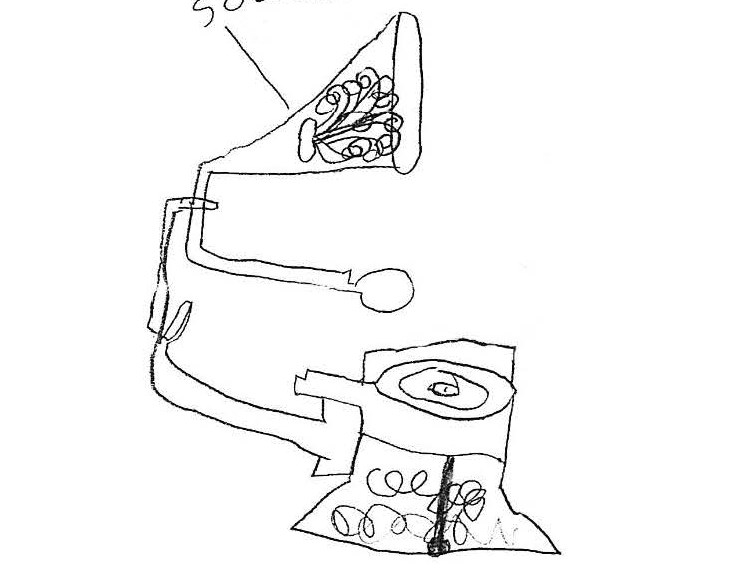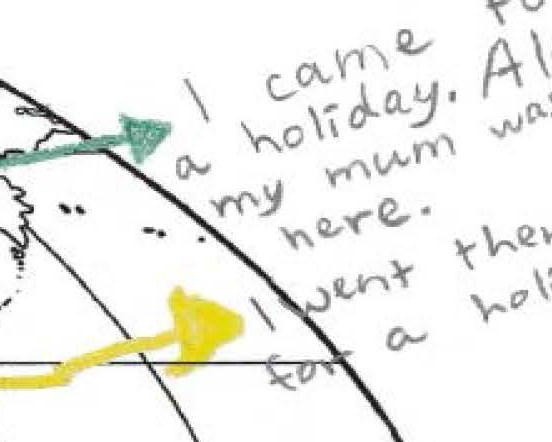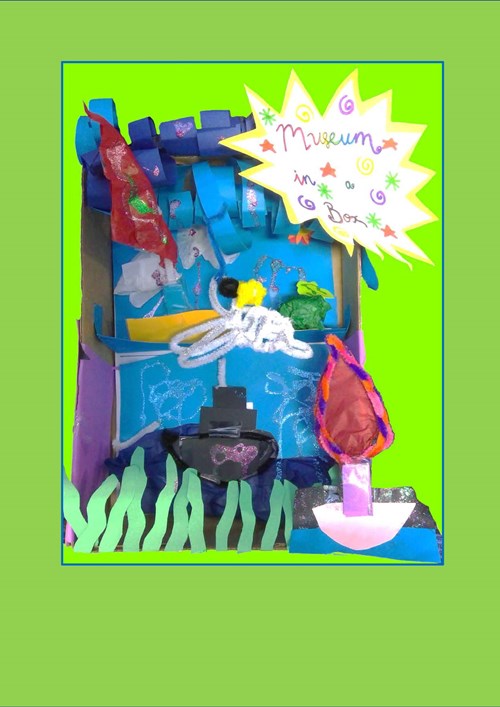Creating a place
Summary of task
Students conducted surveys and collected data about different environments. Students then used the data to inform their drawings of imagined places and wrote reflections on the process and the choices they made. The entire task took place over a one-week period and included time in class as well as at home.
Achievement standard
By the end of Year 2, students identify the features that define places and recognise that places can be described at different scales. Students recognise that the world can be divided into major geographical divisions. They describe how people in different places are connected to each other and identify factors that influence these connections. They explain why places are important to people, recognising that places have meaning.
Students pose questions about familiar and unfamiliar places and answer them by locating information from observations and from sources provided. They represent data and the location of places and their features in tables, plans and on labelled maps. They interpret geographical information to draw conclusions. Students present findings in a range of texts and use simple geographical terms to describe the direction and location of places. They suggest action in response to the findings of their inquiry.
